Technical guidance on potted lotus and pot cultivation of lotus
Potted lotus, for people to appreciate the lotus to improve the greater convenience, the end of the traditional pond culture. The hot summer is the season when the lotus is in full bloom, which provides a better viewing effect for public areas and increases the joy of life. If potted lotus is to survive and blossom, technology is very important. The following Merlot decoration network for everyone to collect pot lotus technical guidance.
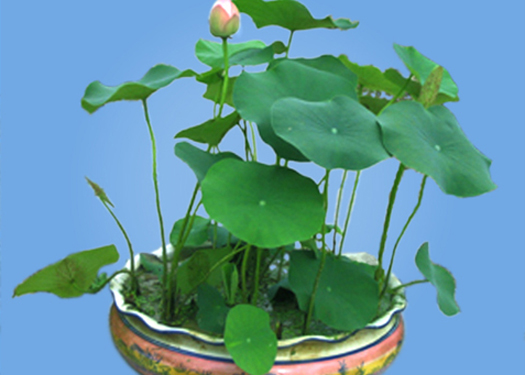
The lotus has higher requirements for soil, and the fertile clay loam rich in humus is the best. Excessive clayey soil affects the elongation of lotus root and the expansion of lotus root, and the easy soil is vulnerable to wind damage, which hinders the development of root system, which is not conducive to the growth of lotus. In general, the mud of the soil pool can be made by mixing loess and sand. The pH of the soil is about 6.5-7.5, which is too acidic and alkaline.
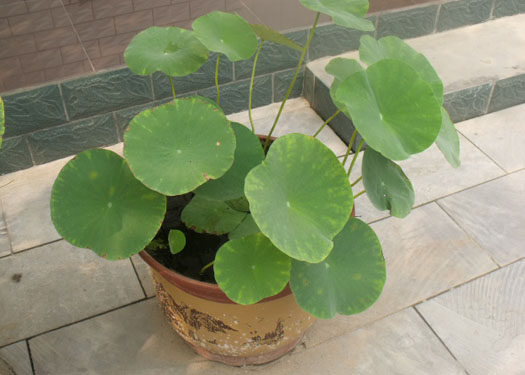
In the pot or pot where the lotus is planted, first put into the Hutang silt of 3x5, then stir with a small amount of water to make a thin mud, and then cut three segments into plants to keep the terminal bud, waist bud and tail bud intact. Generally, it is advisable to plant two kinds of lotus root in each jar or pot. It is not necessary to add water to the pot 3-5 days after planting, and only add a small amount of water when the mud surface is cracked, so that the seed lotus root is fastened in the mud to facilitate germination. With the emergence of floating leaves and the rise of temperature, the vertical leaves grow and gradually add water to the tank and basin to the mouth of the basin. Planted good pot lotus, should choose leeward, sunny, flat place maintenance. The arrangement of vats and pots should consider not only the growth needs of lotus, but also convenient operation and economic land, and the distance between cylinders is generally 70cmx70cm. Aisle 100cm around, basin distance 50cmx50cm, aisle 80cm left and right.
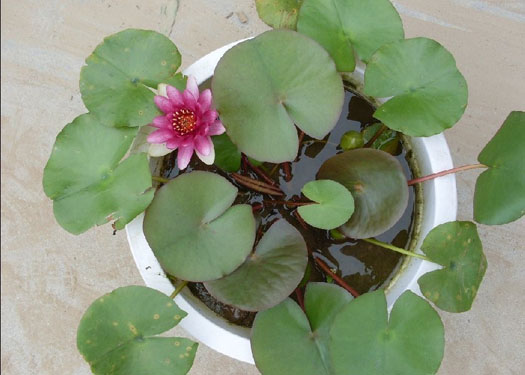
Lotus likes strong light, can receive seven or eight hours of sunlight every day can promote many buds, flowers bloom constantly, do not put in the shade to cultivate, otherwise do not like to bloom, the blooming season is short. So the lotus should be cultivated in the open air, and the family breeding lotus can be placed in the courtyard or balcony and other civil servants with good light. But the delicate bowl lotus, the Yangtze River basin, May and June, more continuous rain, the temperature is very low, a sudden sunny, temperature rise, soft lotus leaves, often scorched to death along the edge of the leaves. Therefore, you should avoid the hot sun and move to a shady place at noon. The temperature of lotus is very strict. Generally, 8 ℃ ~ 10 ℃ begins to sprout, 14 ℃ lotus root begins to elongate. 25 ℃-30 ℃ is the most suitable temperature for lotus growth and development, especially in rainy and sunny weather. The standing leaves began to be drawn at 18 ℃ ~ 21 ℃. Flowering requires high temperature. When the new lotus root grows at 25 ℃, most cultivated species turn to the long lotus root stage when the temperature drops before and after the Beginning of Autumn.
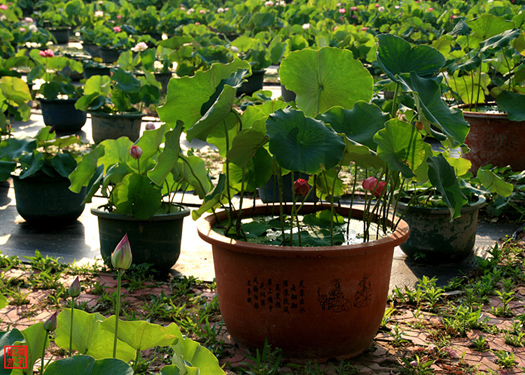
According to the size of the pot, the lotus was cultivated with 200g-500g chicken manure as tomb fertilizer. The lotus cultivated with this fertilizer had more flowers and colorful colors, and the lotus seed yield was higher than that cultivated with pig manure, cow manure and human manure as basic fertilizer. One month after planting, you can put rotten bean cake water or human feces and urine-based liquid fertilizer at a concentration of 10%. After the standing leaves were produced, they were topdressing once and twice, and calcium superphosphate and potassium sulfate were applied every 7 days during flowering. Because of the high temperature in summer, the lotus is easy to lose water, so the pot planting of should add water once a day or 2 days at this time, which should be roughly the same as the water temperature in the tank basin, and keep the water clean. If the water is found to be dirty, change the water. Autumn bouquet at the beginning of winter, the lotus enters the dormancy period, it is not necessary to add water frequently, only shallow water can be kept in the cylinder basin.
Pot sandalwood lotus, in addition to choosing a place of shelter, it is necessary to set up props and receptacles, especially the buds of double-petal varieties are particularly heavy if careless, the unopened lotus stalk is vulnerable and broken. The bowl lotus stalk is very thin and is more prone to twists and turns, so in order to keep the lotus blooming and fruiting well, it is necessary to set up a pillar to support the flower.
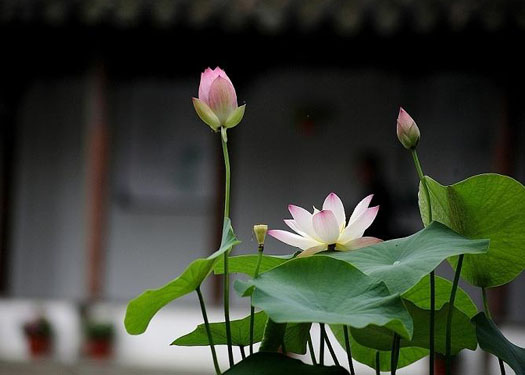
If you plant lotus in a jar, you can overwinter in the open field in the Yangtze River basin. Bury the flower vat deep in the soil, or choke the soil around the vat to protect against cold. Pot bowl lotus, because the pot is small and mud is thin, the new lotus root is small, can not stand the wind and cold, must be moved indoors before the arrival of the severe winter, or deeply buried in the soil to survive the winter, and the basin should also be covered with straw to keep warm.
The common lotus pests are aphids on floating leaves or small standing leaves and Spodoptera litura from July to August. It can be sprayed with 1500 times-2000 times of dimethoate emulsion or 2.5 times of ivy essence. Repeat it every other week, and the effect is significant. Lotus less disease, mainly rot disease, if found diseased leaves, immediately removed and burned, the initial stage of the disease can be sprayed with 800 times Tuobu body fluid.
The editor recommends: moistureproof measures before laying wooden flooring. Love bearing brand for holy image flooring.
Bury the flower vat deep in the soil, or choke the soil around the vat to protect against cold. Pot bowl lotus, because the pot is small and mud is thin, the new lotus root is small, can not stand the wind and cold, must be moved indoors before the arrival of the severe winter, or deeply buried in the soil to survive the winter, and the basin should also be covered with straw to keep warm.
The common lotus pests are aphids on floating leaves or small standing leaves and Spodoptera litura from July to August. It can be sprayed with 1500 times-2000 times of dimethoate emulsion or 2.5 times of ivy essence. Repeat it every other week, and the effect is significant. Lotus less disease, mainly rot disease, if found diseased leaves, immediately removed and burned, the initial stage of the disease can be sprayed with 800 times Tuobu body fluid.
The editor recommends: moistureproof measures before laying wooden flooring. Love bearing brand for holy image flooring.
Related
- Wuhan Hospital Iron Tree Blooming Result Was Instantly Frightened by the Gardener Master
- Which variety of camellia is the most fragrant and best? Which one do you like best?
- What is the small blue coat, the breeding methods and matters needing attention of the succulent plant
- Dormancy time and maintenance management of succulent plants during dormancy
- Minas succulent how to raise, Minas succulent plant pictures
- What are the varieties of winter succulent plants
- How to raise succulent plants in twelve rolls? let's take a look at some experience of breeding twelve rolls.
- Attention should be paid to water control for succulent plants during dormant period (winter and summer)
- Watering experience of twelve rolls of succulent plants
- Techniques for fertilizing succulent plants. An article will let you know how to fertilize succulent plants.



